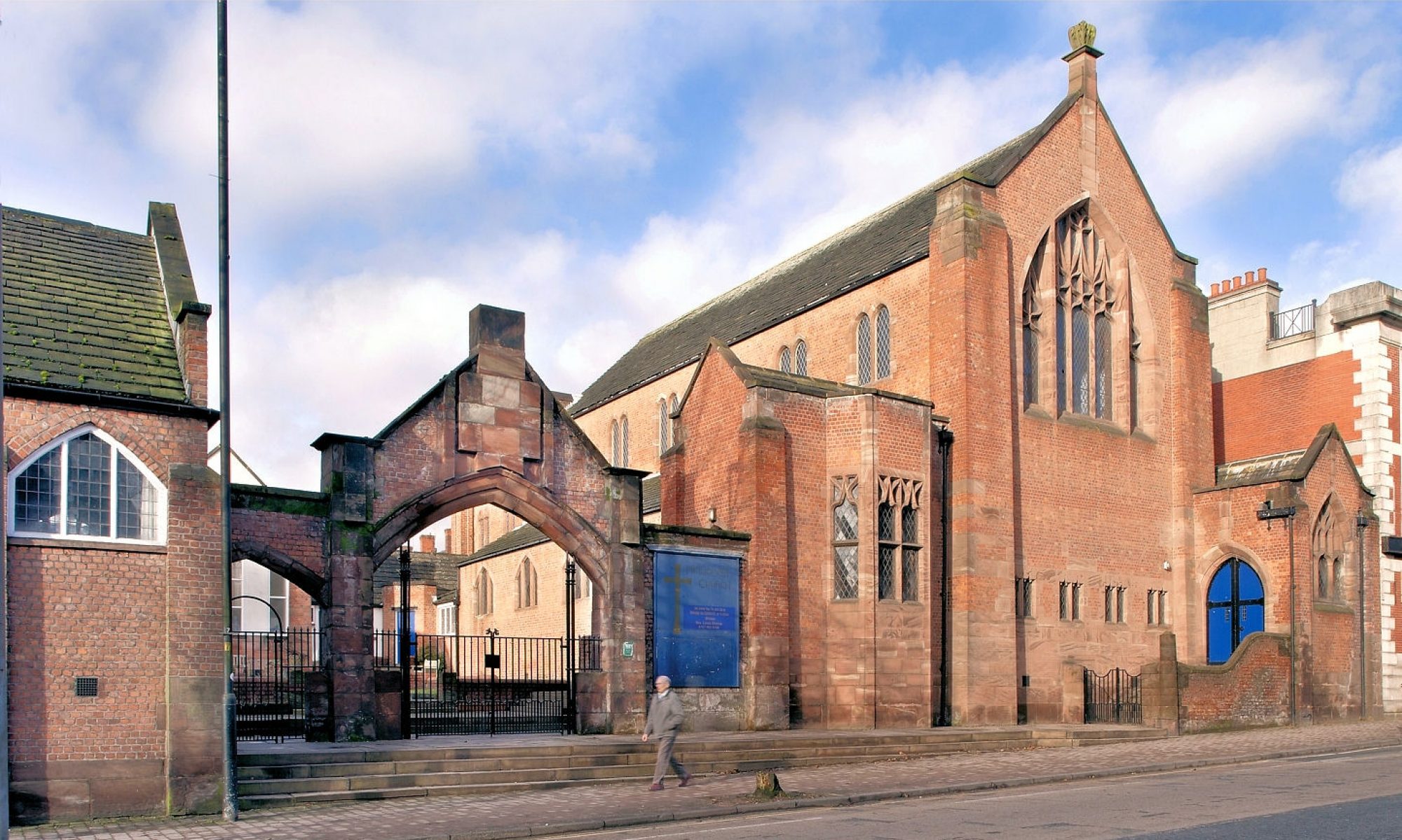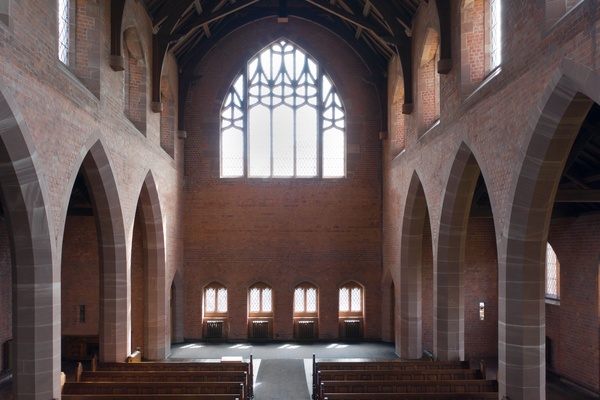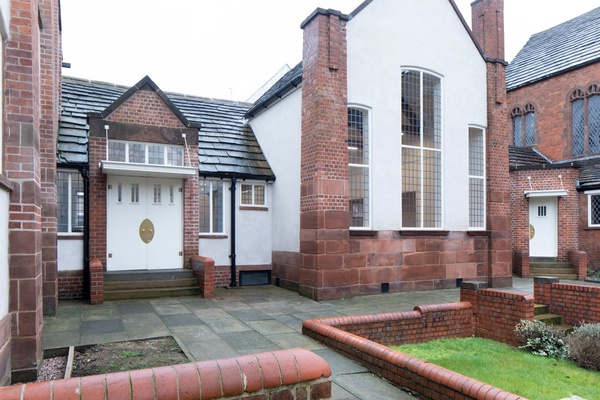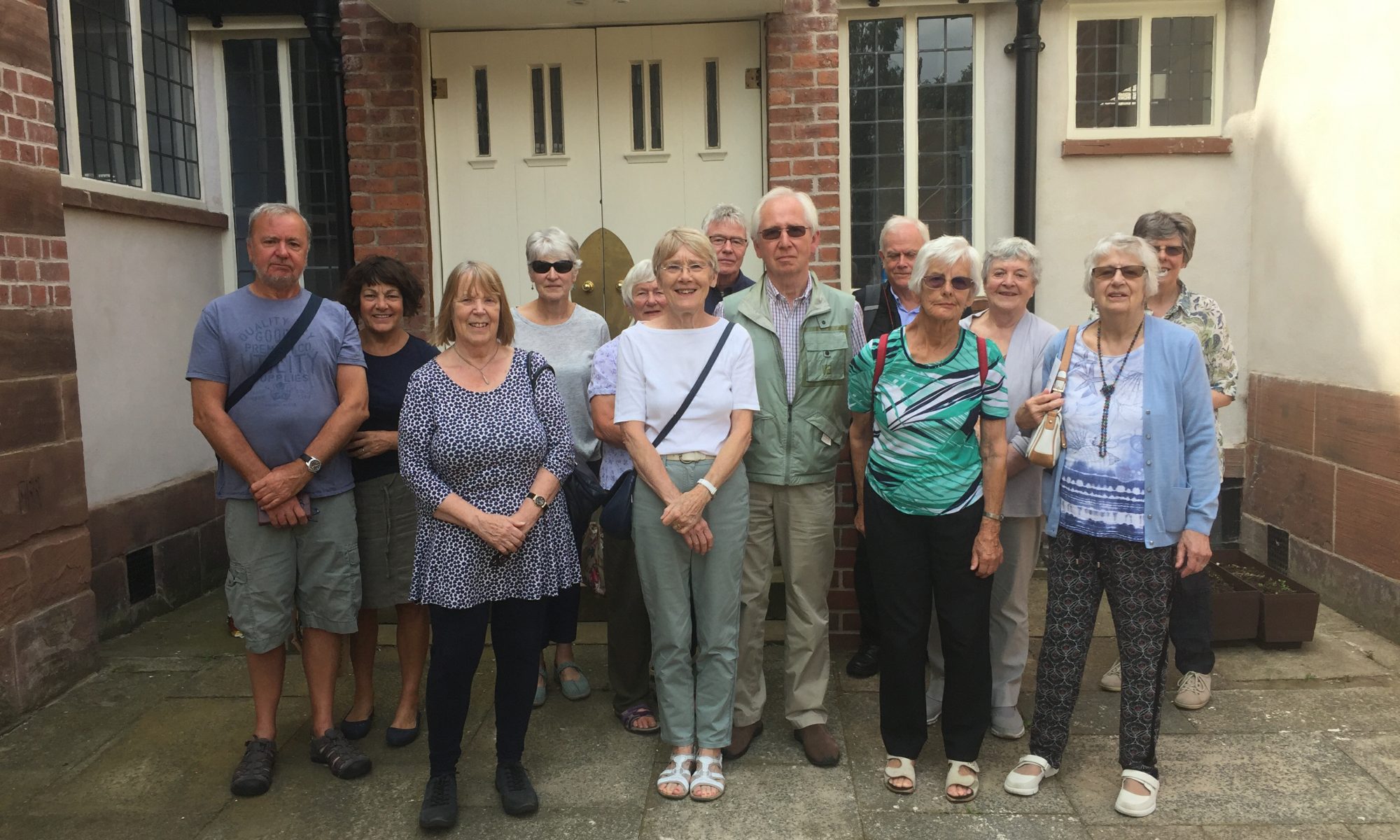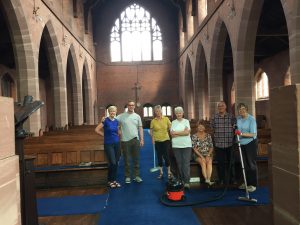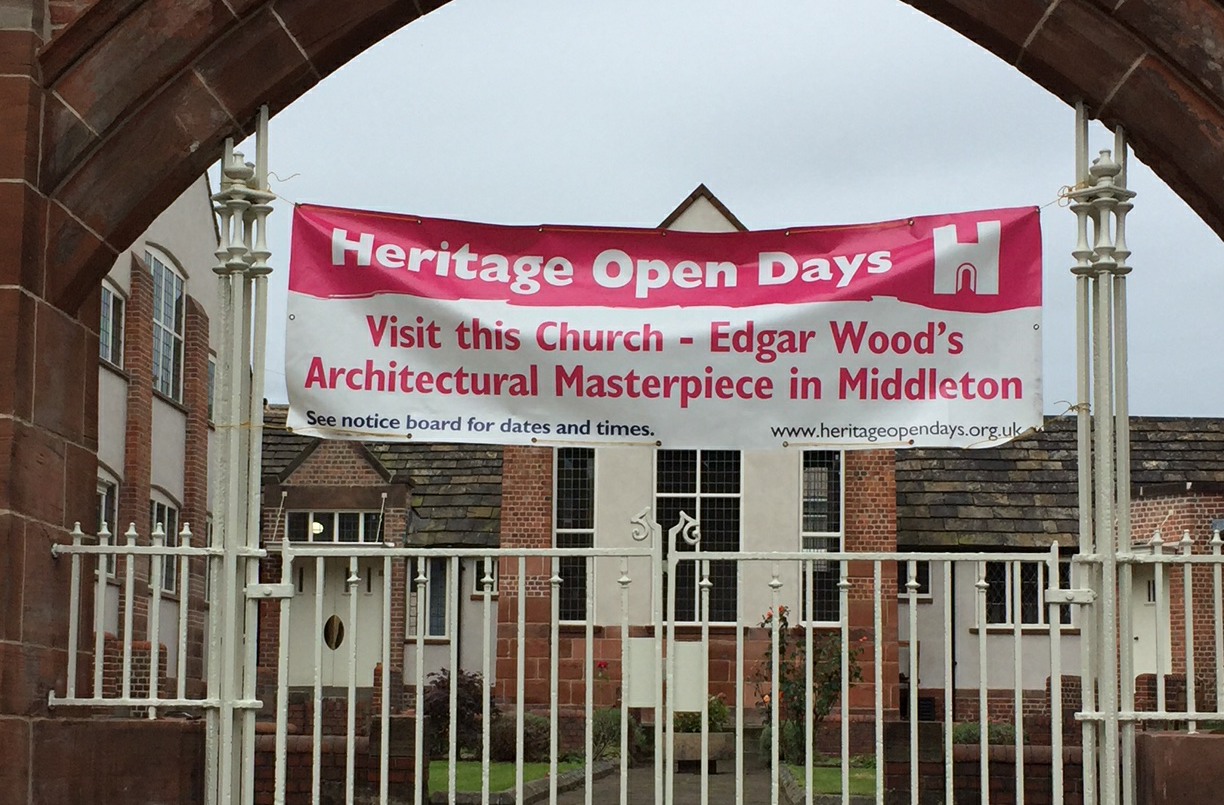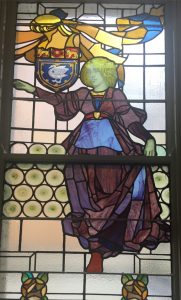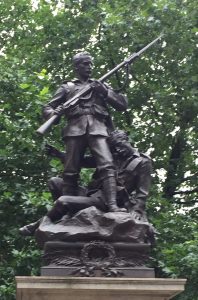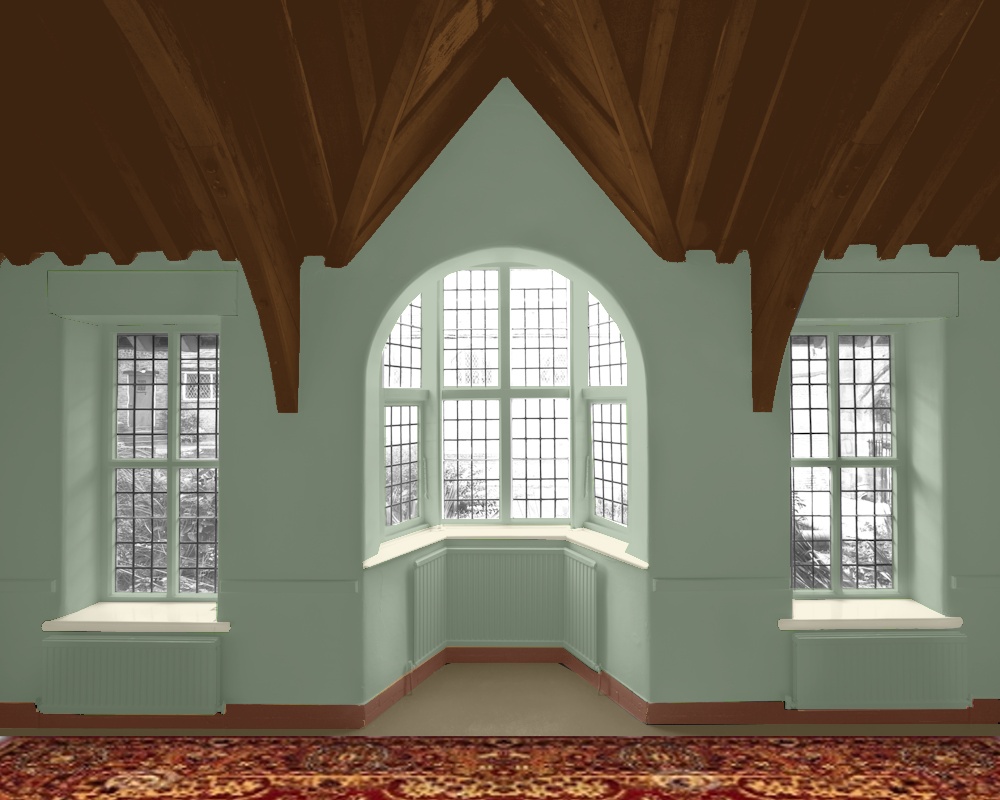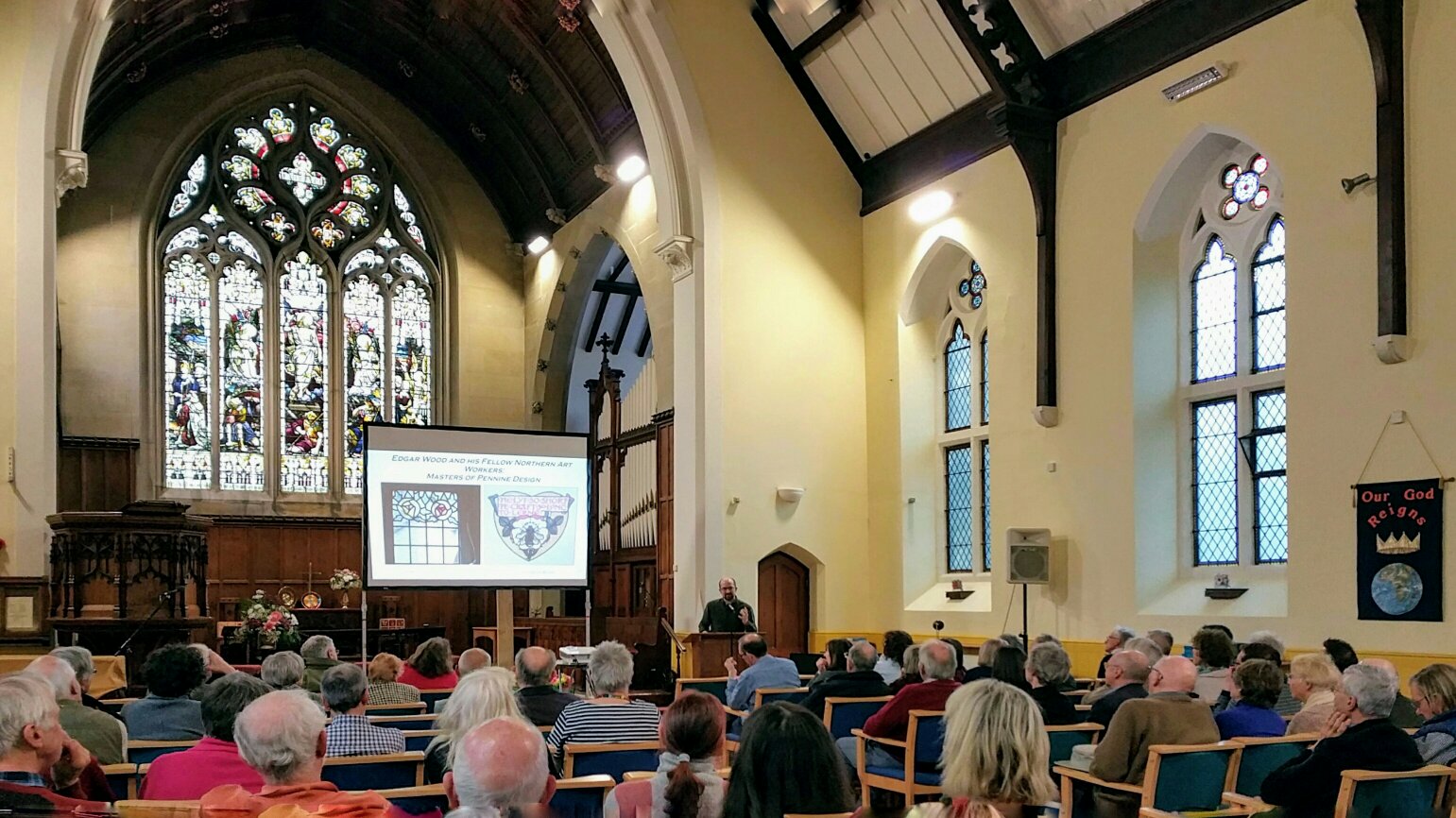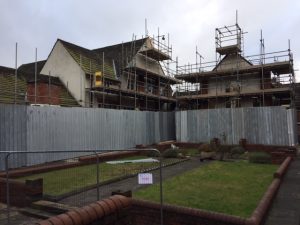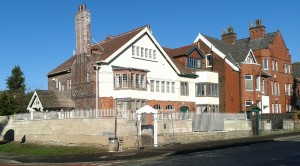Visit the Arts & Craft’s Church free of charge at Heritage Open Days! Open on the following days in September…
Open on the following days in September…
- Friday 13th – 10am to 4pm
- Saturday 14th – 10am to 4pm, 2pm Guided tour of nearby Edgar Wood buildings
- Sunday 15th – 1pm to 4pm, 2pm Guided tour of nearby Edgar Wood buildings
- Friday 20th – 10am to 4pm
- Saturday 21st – 10am to 4pm, 2pm Guided tour of the Peterloo Sam Bamford Trail
- Sunday 15th – 1pm to 4pm, 2pm Guided tour of the Peterloo Sam Bamford Trail
Long Street Methodist Church & School is an Arts & Crafts masterpiece by Manchester architect, Edgar Wood. An indescribable blend of rustic expressionism and Art Nouveau abstraction, it announced a radical new architecture when built in 1900.
The Peterloo Sam Bamford Trail celebrates this year’s theme ‘People Power‘ to mark the 200th anniversary of the Peterloo Massacre. Led by Sam Bamford expert Dave Lees.
How to get there…
Car – SATNAV – Long Street Methodist Church, Lever Street, Middleton, Manchester. M24 5UE
Access by car from outside the area is via the M60 and M62 which provide main routes from the north, south, east and west. Car parking is at the rear on Lever Street.
Bus – The No. 17 bus between Manchester and Rochdale passes adjacent along Long Street (alight at Jubilee Park/Middleton Library) and Middleton Bus Station is also within walking distance.
Train – The nearest railway station is Mills Hill, a mile and a half east of Middleton centre. It lies on the Caldervale Line between Manchester and Leeds.
Wheelchair Access – Due to substantial changes in levels across the site, wheelchair access is presently limited to around 50% of the interior and not the garden. Disabled toilets are available.
